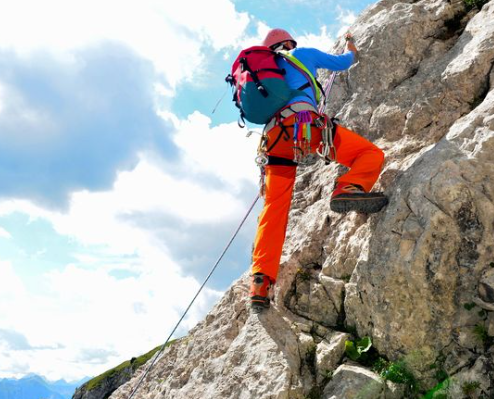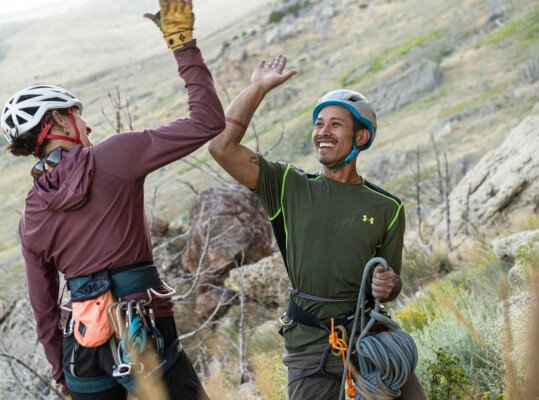Mountain climbing is inherently risky and should be done with extreme caution. However, by following these mountain climbing safety guidelines, climbers can greatly reduce their chances of sustaining serious injuries during their ascent. Here are some essential rules that climbers must follow to ensure their safety while climbing mountains.

Always seek professional advice .
Experienced climbers should never underestimate the difficulty of any mountain .They should always consult with experienced professionals before attempting a climb.
Ensure that you are physically fit for the climb.
Climbing mountains is an extremely strenuous activity. So it is essential to make sure that your body is prepared for the challenge. Dont force yourself to climb when you feel tired.
Check the weather forecast before climbing .
Weather can change quickly at higher altitudes and can be unpredictable, so it’s important to stay updated on the conditions of the mountain before setting out. So that you avoid getting hit by a thunderstorms.
Use proper climbing equipment
It is essential to have all of the necessary safety gear when climbing, such as ropes, carabiners, harnesses, helmets and proper footwear. Climbing equipment is essential as it will help you climb the mountain easier and faster .
Never climb alone.
It’s important to always have at least one other person with you when climbing as a safety precaution in case of emergency.
Stick to marked trails and paths.
Taking shortcuts or veering off the trail can be extremely dangerous, so it’s important to stay on the designated routes while climbing.
Always inform someone of your plans before setting out on a climb.
In case of an emergency, it is essential to let someone know where you are going and when you expect to return for rescue teams to find you more quickly.
Always be conscious of your surroundings.
Pay attention to the terrain and any potential hazards that may arise during the climb, such as loose rocks or crevasses.
Keep hydrated and eat regularly while climbing.
Climbing mountains is a physically demanding activity, so it’s important to stay hydrated and eat regularly in ode to maintain your strength.
Always use caution when descending.
Descending a mountain is just as dangerous as climbing one, so it’s important to take your time and use extra caution when coming down.
Take breaks when necessary.
It’s important to rest and take breaks throughout the climb to avoid fatigue and prevent injuries.
Be aware of your limits.
Pushing yourself too hard can be extremely dangerous, so it’s important to know your limits and turn back if necessary.
Do not attempt any climbs that you are not comfortable with.
If you feel that a particular climb is beyond your abilities, then it’s best to turn back rather than risk an accident.
Always seek help if you experience any signs of distress.
If you begin to feel dizzy, nauseous or light-headed during a climb, it’s important to stop and seek help immediately.
Dispose of any rubbish responsibly.
It is important to help keep the mountain clean and free of litter by disposing of any rubbish in the proper bins or containers.
Respect the mountain and its inhabitants.
It is important to be mindful of the environment and any wildlife that may inhabit the mountain, so it’s important to respect their space and not disturb them.
Be prepared for unexpected events.
No matter how experienced or prepared you are, there is always a chance of something going wrong during a climb, so it’s important to be prepared for any eventuality.
Always follow local regulations and laws.
Different areas may have different rules and regulations when it comes to climbing mountains. So make sure to familiarize yourself with these before setting out on your climb.
Wear the proper clothing and equipment.
It’s important to wear the right clothing and gear while climbing, such as sturdy hiking boots, gloves, a helmet and other protective gear.
Use safety devices when available.
Mountain climbing can be dangerous, so it’s important to use any available safety devices, such as harnesses or ropes.
Conclusion
By following these mountain climbing safety guidelines, climbers can greatly reduce their risk of sustaining serious injuries while mountain climbing. However, it’s important to remember that even with proper preparation and safety gear, accidents can still happen. Therefore, it is essential to stay alert and aware of your surroundings at all times when climbing mountains.


